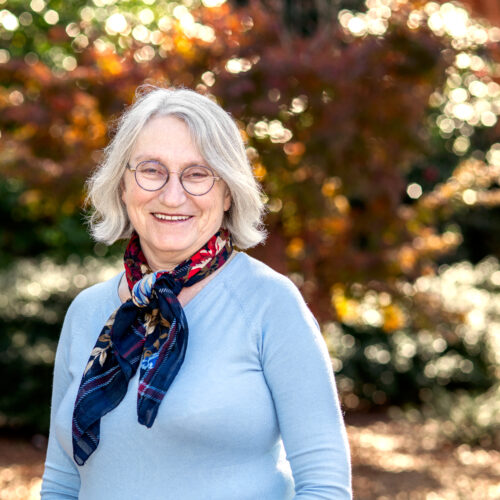Department of Pathology
Medical Pathologist, Professor
Expertise
Equine Degenerative Suspensory Ligament Desmitis | Animal Models of Human Disease | Disease Pathogenesis | Neoplasia Pathology and Pathogenesis
Biography
Research Interests
- Tendon physiology and repair
- Equine degenerative suspensory ligament desmitis
- Role of growth factors in wound healing
- Biology of transforming growth factor type e and granulins
Dr. Halper’s primary research interest is in the area of equine degenerative suspensory ligament desmitis (DSLD), a chronic tendon disorder leading to pain and lameness. She has determined that DSLD is a progressive debilitating disorder characterized by inappropriate accumulation of proteoglycans in connective tissues, including tendons and ligaments. Her group is working on validating and developing diagnostic assays for DSLD.
In the past her lab has developed several innovative methods aimed at detection of carbohydrate chains attached to proteoglycans. Her laboratory analyzed growth and exercise-induced changes in proteoglycan composition of the avian tendon. As a PhD student, she has identified and characterized transforming growth factor type e, a member of the granulin family. This growth factor acts as a mitogen for epithelial and fibroblastic cells and promotes skin wound healing. In collaboration with a group at McGill University she worked on biology of granulins.
Educational Background
- MD (1980) University of Toronto
- PhD (1986) University of Minnesota
- Diplomate, American Board of Pathology
Teaching Experience
- Cell biology
- Human pathology and pathophysiology
- Carcinogenesis
- Inflammation
- Wound healing
- Physiology of growth factors
Selected Publications
Books:
- Halper J (editor and author of four chapters). Progress in Heritable Soft Connective Tissue Diseases. 2nd Edition in Series: Advances in Experimental Medicine and Biology, Springer Nature, Switzerland, 2021. Accessed 20,000 x since publication, 112 citations.
Journal articles:
- Roberts JH, Zhang J, David F, McLean A, Blumenshine K, Müller-Alander E, Halper J. Expression of genes with biomarker potential identified in skin from DSLD-affected horses increases with age. PLoS ONE 18(7): e0287740. https://doi.org/10.1371/journal.pone.0287740
- Halper J. Basic components of connective tissues and extracellular matrix: fibronectin, fibrinogen, laminin, elastin, fibrillins, fibulins, matrilins, tenascins and thrombospondins. Adv Exp Med Biol, 1348:105-126
- Hwang CT, Halper J. Proteoglycans and diseases of soft tissues. Adv Exp Med Biol, 1348:127-138
- Roberts JH, Halper J. Growth factor roles in soft tissue physiology and pathophysiology. Adv Exp Med Biol, 1348:139-159
- Roberts, JH, Halper J. Connective tissue disorders in domestic animals. Adv Exp Med Biol, 1348:325-335
- Haythorn A, Young A, Stanton J, Zhang J, Mueller POE, Halper J. 2020. Differential gene expression in skin from horses affected with degenerative suspensory ligament desmitis. 2020. J Orthopaed Surg Res, 15, 460, DOI: 10.21203/rs.3.rs-41297/v2
- Sarbacher, CA, Halper J. Connective tissue and age-related diseases. Subcell Biochem 91:281-310
- Young M, Moshood O, Zhang J, Sarbacher CA, Mueller POE, Halper J. 2018. Does BMP2 play a role in the pathogenesis of equine degenerative suspensory ligament desmitis? BMC Res Notes 11(1):672
- Kim B, Yoon JH, Zhang J, Mueller POE, Halper J. 2010. Glycan profiling of a defect in decorin glycosylation in equine systemic proteoglycan accumulation, a potential model of progeroid form of Ehlers-Danlos syndrome. Arch Biochem Biophys, 501:221-231.
- Halper J. Growth factors as active participants in carcinogenesis: a perspective. Invited review. Veterinary Pathology 47:77-97.
- Halper J, Kim B, Khan A, Yoon JH, Mueller POE. 2006. Degenerative suspensory ligament desmitis as a systemic disorder characterized by proteoglycan accumulation. Biomed Central Veterinary Research 2:12.
- Yoon JH, Halper J. The quantification of chondroitin sulfate by rocket electrophoresis. Anal. Biochem. 344: 158-160.
- Yoon HJ, Brooks R, Kim YH, Terada M, Halper J. Proteoglycans in chicken gastrocnemius tendons change with exercise. Arch. Biochem. Biophys. 412:279-286.
- He Z Ong C, Halper J, Bateman A. 2003. Progranulin is a mediator of the wound response. Nature Medicine 9: 225-229.
- Yoon JH, Brooks R Jr, Halper J. 2002. Immunoblotting assays for keratan sulfate. Anal. Biochem. 306:298-304.
- Parnell PG, Wunderlich J, Carter B, Halper J. 1992. Transforming growth factor type-e: amino acid analysis and partial amino acid sequence. Growth Factors 7:65-72.
